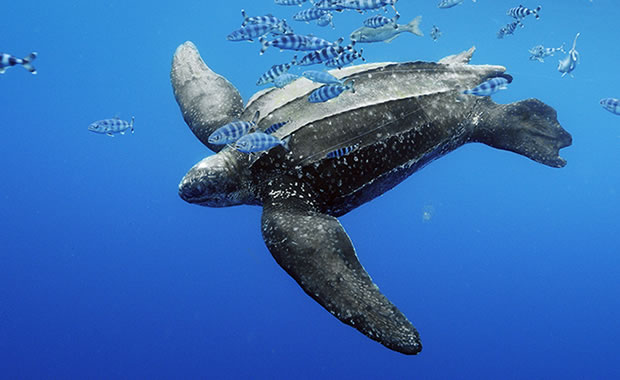Creature Profile
The North Pacific Right Whale is a mammal from the genus Eubalaena and family Baleanidae. It measures around 59 feet head to body length and up to 160,000 pounds in body mass. Its head measures up to a third of its total body mass. Females are generally longer and consequently heavier. As implied by its size and weight this species is a massive creature. It has a stockpile body whose skin is colored black but may have patches of white on the belly in some individuals. Near its blow-holes and eyes are huge callosities which are parts of raised tissues. These raised tissues also appear on the lower lip and the chin and on the rostrum. The largest callosity usually called the bonnet appears on the top of the rostrum. North Pacific Right Whale has large flippers that are broad, rounded and fan-shaped but has no dorsal fin. It also has no grooved throat or ridge. It has a black tail which is deeply notched and large. Its mouth has huge strong jaws and baleens for teeth. These teeth are colored brown with a grayish tinge and reach 10 ft in length. These baleen plates can be up to 270 in an individual. The blow-hole has a septum (dividing tissue) which results in the water being blown forming a v-like shape. Their 7 cervical vertebrae fuse to form a single unit.
Though huge, Northern Pacific Right Whale is presumed to only feed on cope-pods, barnacles, and crustacean larvae. Little is known about its preferred habitat(s). The North Pacific Right Whale occurs in shelf (coastal) waters although it moves into deep waters sometimes in sub-arctic and temperate waters. It is known to occupy four habitats based on breeding, calving, nursery, and feeding. It is a full migrant that migrates to higher latitudes during summer and spring. It migrates northwards in summer and southwards in winter. Mating among the North Pacific Right Whale is through gentle physical contact physically and nuzzling. Females often mate with several males. Mating activities include head standing whereby the male and female stand vertically facing each other and rock back and forth for some minutes in this position. Others include breaching, and flapping of their tails and fins. After a gestation period of up to 13 months a single young termed as a calf is born. Lactation lasts until around the 7th month. Sexual maturity is reached at around the 10th month. This species breeds at intervals of up to 4 years like other right whales.
The North Pacific Right Whale was abundant in the Northern Pacific ocean in the past. However this species has declined at a high rate and only a small number of the initial population exists today. It is threatened by increased commercial whaling, climatic changes and limitation in population recovery of this species due to their long reproduction intervals. Conservation actions include: full international protection through agreements from the early 1930s, inclusion in Appendix I of Convention of the Conservation of Migratory Species of Wild Animals and Convention on International Trade in Endangered Species, and the designation of a small region for this species under the US Endangered Species Act.
Wikipedia Article

|
Wikipedia Article Copyright Notice: This article is licensed under the GNU Free Documentation License. It uses material from the Wikipedia article "North Pacific right whale". |
March 19, 2023
Glenn, C. R. 2006. "Earth's Endangered Creatures - North Pacific Right Whale Facts" (Online). Accessed 4/25/2024 at http://earthsendangered.com/profile.asp?sp=2153&ID=9.
Need more North Pacific Right Whale facts?




